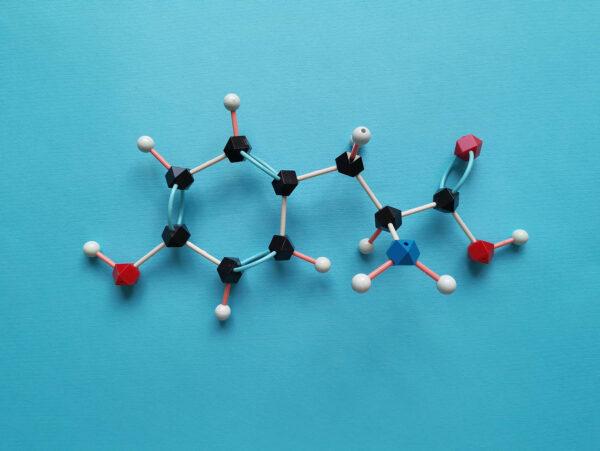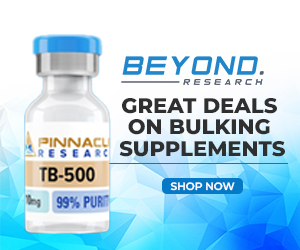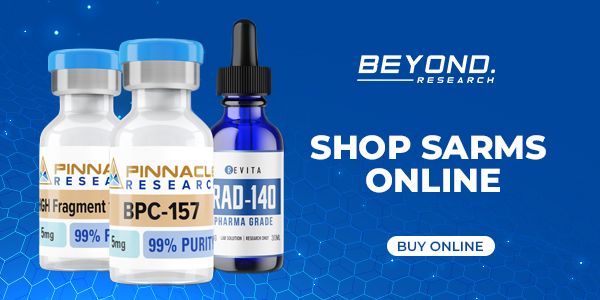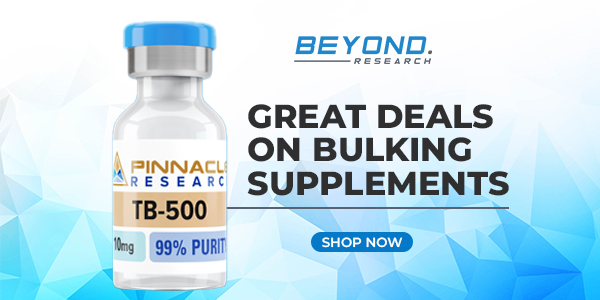Selective Androgen Receptor Modulators (SARMs) and Peptides are popular compounds athletes use to facilitate muscle growth and strength. Many people confuse SARMs with peptides, assuming the two are the same and have the same functionality. The two compounds are undergoing clinical research and trials to determine their benefits in treating several health conditions.
One key similarity between SARMs and peptides is their ability to facilitate muscle growth and strength in users. However, there are key differences that make the two compounds stand out. In our detailed guide, we will look at the key differences between SARMs and Peptides, from their potential benefits to how they work.
SARMs vs. Peptides
What are SARMs
Selective Androgen Receptor Modulators (SARMs) are androgen receptor ligands. These synthetic therapeutic compounds selectively bind themselves to the body’s androgen receptors, possessing similar traits to those of anabolic steroids. Even though they trigger similar benefits to anabolic steroids, they don’t have side effects related to anabolic steroids. They don’t occur naturally; instead, they are developed in laboratories.
Scientists first developed SARMs to assist in bone generation. But the compound triggered fat burning and muscle-building effects by triggering enhanced user performance. The compounds have proven to be safer than anabolic steroids when used as a bodybuilding supplement. Despite being taken orally, the SARMs don’t trigger side effects like liver damage caused by orally ingested anabolic steroids.
SARMs also trigger the same muscle-building benefits caused by testosterone. It also doesn’t cause side effects normally associated with synthetic testosterones. The chemical structure of SARM is very different from that of testosterone and anabolic steroids. Despite having so many muscle-building and fat-burning benefits to users, the compounds aren’t FDA-approved. SARMs can’t be categorized as supplements because the FDA hasn’t approved them.
There are different types of SARM products in the market from different brands. Since SARM are selective androgen receptor modulators, they selectively target different body tissues. Therefore, some SARM products are more suitable for lean muscle growth and others for burning body fat. Popular SARM products in the market include Andarine (S-4, GTx-007), RAD 140, BMS-564,929, LGD 4033, and Ostarine.
How Do They Work?
SARMs work very differently compared to other fitness and muscle-building supplements. They are selective androgen receptor modulators; hence they are formulated to target specific body tissues when ingested. After ingesting the product, it will target a specific androgen receptor in your body, binding to that particular receptor. On the other hand, anabolic steroids affect the body more without targeting any specific androgen receptor.
The SARM will greatly stimulate receptors that trigger muscle growth, strength, and fat-burning. They have a very mild effect on the prostate. The classic SARM products are anabolic; hence, users will require a PCT after completing their cycle. PCT supplements will help the body and restore its normal testosterone production and levels.
Due to their functionality, SARM significantly affects muscle tissues and bone tissues since they target receptors due to their functionality. Athletes using the products have reported increased lean muscle gains, improved performance, and stamina. Possible side effects associated with using SARM products include:
- Liver injury
- Hair loss
- Gynecomastia
- Testosterone suppression
- Acne issues
- Hamper sexual health
- Disrupt menstrual cycle
- Frequent mood swings
You can minimize the possible side effects by ingesting the proper dosage and taking the necessary precautions during the SARM cycle.
What are Peptides?
Peptides are bodybuilding supplements made up of polypeptide chains containing less than 50 amino acids. Polypeptides are amino acid chains, which have 10 to 100 amino acids, and polypeptides with more than 50 amino acids are scientifically referred to as proteins. Peptides can be natural or synthetic.
Peptides are more potent than the creatine and protein supplements athletes use in muscle building. Additionally, peptides have more tolerable side effects than anabolic steroids used in muscle building.
Peptides don’t cause any anabolic effect on the body. Instead, they function like GH secretagogues. They facilitate the production and secretion of the muscle growth hormone. There are two main types of peptides:
- Growth hormone-releasing hormone (GHRH)
- Growth hormone-releasing peptides (GHRP)
Other peptide types available in the market are HGH Fragment 176-191, Myostatin, and MGF (mechano growth factor). In 2021, the FDA approved about eight peptides. However, it’s important to ensure you purchase your peptide supplement from a reliable brand.
How Do They Work?
Unlike the SARMs, the peptides trigger the production of specific hormones in the body. The growth hormone-releasing peptides can facilitate the body’s increased production of growth hormones, hence attaining muscle growth. Additionally, the increased growth hormones can increase the production of other muscle-building hormones like IGF-1 and testosterone. The peptide supplements target the hypothalamic and pituitary receptors.
Possible side effects users can experience when using synthetic GHRH include:
- Impaired glucose tolerance
- Water retention
- Joint pain
- Numbness
- Carpal tunnel syndrome
- Elevated blood sugar
When using the GHRP, athletes can experience the following side effects:
- Sleepiness
- Increased GI motility
- Hunger
Side effects can be easily avoided by following the recommended dosage and precautions during the peptide cycle.
Key Differences between SARMs and Peptides
Definition
SARM products are therapeutic compounds possessing similar traits to those of anabolic steroids. These androgen receptor ligands, however, have reduced androgenic properties. Peptides, on the other hand, refer to natural or synthetic polypeptide chains with more than 50 amino acids present in the chain. They trigger fat-burning and muscle-building processes.
Significance
SARMs are androgen receptor ligands that are artificially developed. But peptides are polypeptide chains containing less than 50 amino acids. While SARMs products are generally categorized as one, the peptides have different categories. The main peptides are growth hormone releasing hormone (GHRH) and growth hormone releasing peptides (GHRP).
Natural or Synthetic
Peptides are available in natural and synthetic forms. Athletes can get natural peptides from various food sources like meat, fish, beans, soy, etc. The other option is taking the laboratory-developed peptides, which are sold as supplements. SARM products are all artificial, with no natural sources. They are developed and formulated in laboratories.
Functional Significance
SARM compounds have different functionality despite triggering the same muscle growth and strength benefits as anabolic steroids. They instead bind themselves to specific androgen receptors in the muscles and bones, causing lean muscle growth and strength. Peptides have a hormone-focused functionality by facilitating the increased production of growth hormones. The growth hormones, in turn, trigger muscle growth and strength. The SARM and peptide trigger the same results but using different functionality.
Selectivity
Due to their unique functionality to the body, SARM products significantly affect the muscle and bone tissues, thus triggering fast muscle building and enhancing bone strength. On the other hand, selective peptides have a very low effect on the body’s muscle-building process.
Buying SARMs or Peptides for Bodybuilding
When it comes to safe fitness, SARMs are better than anabolic steroids, while peptides are better than creatine and protein in muscle building. The SARM compounds are androgen receptor ligands triggering muscle-building and fat-burning effects without causing side effects like anabolic steroids. Whereas peptides are polypeptides (natural or synthetic), having more than 50 amino acids in a single chain. These compounds are easily absorbed in the body and trigger increased production of growth hormones. The main differences between SARMs and peptides are their functionality, selectivity, and composition.
SARMs and Peptides do different things triggering the same results. If you want more potency, you can decide to stack the two and enjoy enhanced muscle growth, strength, and fat-burning effect whether you are cutting or bulking.












